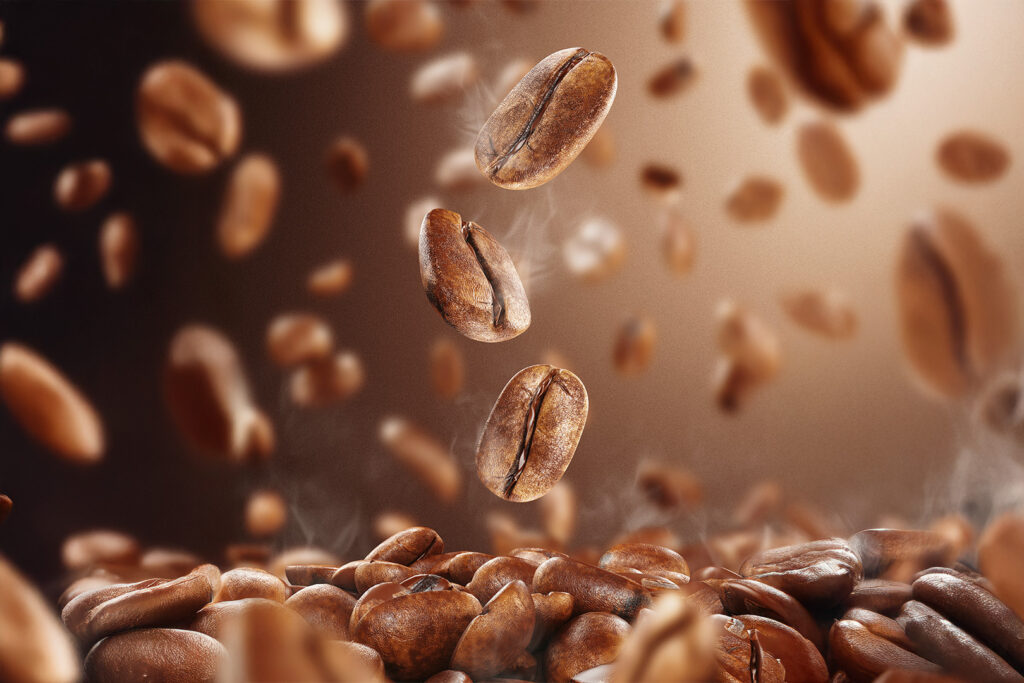For those who work with coffee roasting, understanding how the beans behave during heating is essential to obtain a final product with quality and consistency. Among the various phenomena that occur during roasting, one of the most important is the “crack” – an audible pop that signals chemical and physical transformations of the beans. But what exactly is “crack” and how does it influence the flavor, aroma and structure of the coffee?
Whether you are an experienced roaster or a company seeking greater control over roast profiles, understanding the two stages of “crack” is essential to refine processes and deliver a high-quality product.
What is “crack” in coffee roasting?
During roasting, coffee beans undergo a series of chemical and physical reactions that affect their composition. As the temperature increases, residual moisture evaporates and gases form inside the bean. At a certain point, the internal pressure becomes so high that it ruptures the cell walls of the bean, producing a characteristic popping sound.
The first “crack”
First “crack” occurs when the beans reach approximately 196°C. This is a crucial phase of roasting, as this is when the aromatic compounds begin to develop intensely. This is the point at which the moisture inside the beans is converted to steam, expanding the coffee cells and causing the cellular structure to rupture.
When a coffee is roasted until just after first “crack”, it tends to preserve more fruity, acidic and floral notes. This approach is often used for specialty coffees, as it allows the characteristics of the origin to shine through.
If roasting is stopped shortly after the first “crack”:
- The coffee will have a more acidic and sweet profile.
- The aromas will be more vivid and intense.
- The body will be lighter and more delicate.
This type of roast is ideal for extraction methods such as V60, Chemex and Aeropress, which value more complex sensory profiles.
On the other hand, if the bean continues to roast beyond the first “crack”, it begins to lose some of its acidity and gain more caramelized and chocolatey notes. This is useful for companies that want a more balanced, medium-roast coffee.
The second “crack”
If the roasting process continues to reach temperatures between 224°C and 230°C, the second “crack” occurs. Unlike the first “crack”, this sound is softer, similar to the “crack” of twigs breaking. At this point, the internal oils begin to migrate to the surface of the bean and the cellular structure becomes more fragile.
Coffees that go beyond the second “crack” have a fuller-bodied and bitter profile, as the sugars have already broken down completely and the oils have become more evident. This roast is characteristic of styles such as Italian espresso and more intense coffees.
If a coffee is roasted to second “crack”:
- The flavor will be more bitter and smoky.
- The acidity will be almost completely reduced.
- The body will be fuller and more oily.
While many roasters are looking for lighter or medium profiles, there is still a loyal following for dark roasts, especially among strong espresso lovers.
Some important tips for roasting
An important factor is controlling the rate at which the temperature rises. If the temperature rises too quickly, the first “crack” may occur before the sugars have time to develop properly, resulting in an acidic, low-bodied coffee. If it is too slow, the bean may dry out too much before the first “crack”, compromising the sweetness and aromatic complexity.
Some roasters prefer to stop roasting right after the first “crack” to bring out fruity characteristics, while others continue until the beginning of the second “crack” to obtain a fuller-bodied, less acidic coffee.
No matter which option you choose, controlling these moments is what defines the quality and consistency of a well-roasted coffee.

